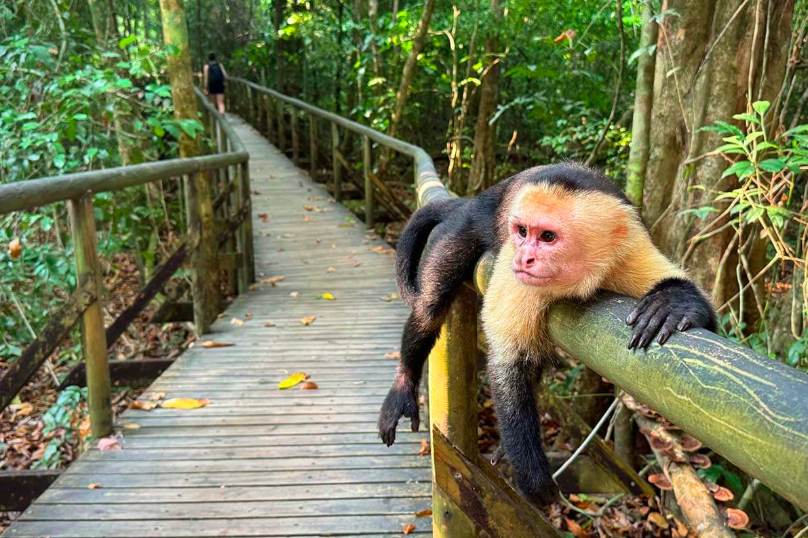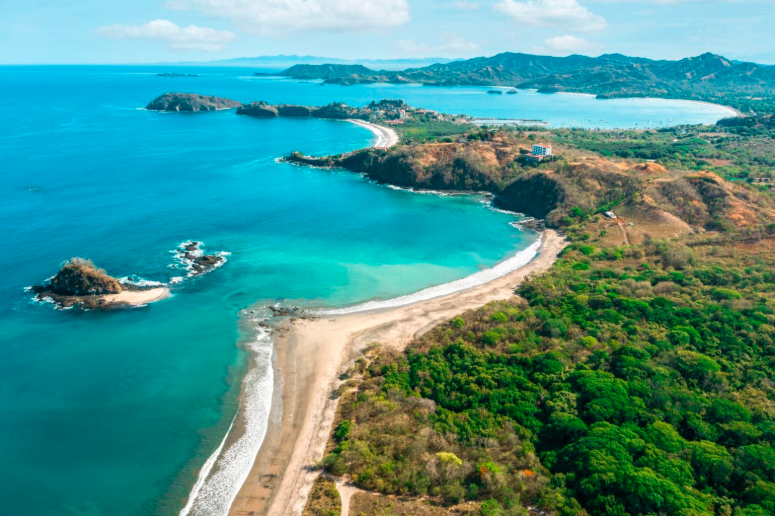Costa Rica stands as a beacon of biodiversity and conservation, protecting over 25% of its territory through an impressive network of national parks and protected areas. For eco-conscious travelers seeking authentic nature experiences, this Central American gem offers unparalleled opportunities to witness wildlife in pristine habitats while supporting conservation efforts.
From misty cloud forests to volcanic landscapes and pristine beaches teeming with wildlife, Costa Rica’s national parks showcase some of the planet’s most biodiverse ecosystems. Each park tells a unique story of conservation success, where sustainable tourism practices help fund protection efforts while providing visitors with transformative encounters with nature.
This comprehensive guide explores the country’s most spectacular national parks, revealing what makes each destination special and how you can experience them responsibly. Whether you’re drawn to the calls of howler monkeys at dawn, the sight of scarlet macaws soaring overhead, or the thrill of spotting a jaguar’s tracks in pristine rainforest, Costa Rica’s protected areas deliver experiences that will reshape your understanding of our natural world.
Why Costa Rica is a Prime Destination for Nature Lovers
Costa Rica has earned its reputation as the world’s premier eco-tourism destination through decades of commitment to environmental protection and sustainable development. Despite covering only 0.03% of Earth’s surface, this remarkable country harbors approximately 6% of the world’s biodiversity, making it one of the most species-dense regions on the planet.
The nation’s forward-thinking approach to conservation began in the 1970s when visionary leaders recognized that protecting natural resources could drive economic growth through sustainable tourism. This philosophy created a model that other countries now strive to emulate, where conservation and economic development work hand in hand.
Costa Rica’s unique geographical position between North and South America, combined with diverse microclimates created by mountain ranges and coastal influences, has produced an extraordinary variety of habitats. Tropical dry forests transition to lush rainforests, while cloud forests crown mountain peaks and mangrove systems protect coastal areas. This habitat diversity supports over 500,000 species, including more bird species than the entire United States and Canada combined.
The country’s commitment to renewable energy further demonstrates its environmental leadership. Costa Rica runs on nearly 100% renewable electricity, primarily from hydroelectric, wind, and solar sources. This dedication to sustainability extends to tourism operations, where eco-certified accommodations and tour operators follow strict environmental guidelines.
For travelers, this commitment translates into authentic experiences where wildlife encounters occur in protected, well-managed environments. Park rangers and naturalist guides possess deep knowledge of local ecosystems, enhancing visitor experiences while ensuring minimal environmental impact.
Top National Parks to Visit
Manuel Antonio National Park
Manuel Antonio National Park perfectly embodies Costa Rica’s ability to balance conservation with accessibility. This compact coastal park protects 1,983 hectares of tropical rainforest, pristine beaches, and coral reefs along the Pacific coast. Despite being the country’s smallest national park, Manuel Antonio delivers extraordinary biodiversity and memorable wildlife encounters.
The park’s trail system winds through primary and secondary rainforest, leading to four spectacular beaches where visitors can observe wildlife while enjoying some of Costa Rica’s most beautiful coastline. White-sand beaches provide nesting sites for olive ridley sea turtles, while rocky headlands create tidal pools rich with marine life.
Manuel Antonio’s wildlife viewing opportunities rank among the best in Central America. Three species of monkeys call the park home: white-faced capuchin monkeys, mantled howler monkeys, and endangered Central American squirrel monkeys. The latter species exists nowhere else in Costa Rica, making sightings particularly special for wildlife enthusiasts.
Birdwatchers can expect to see over 180 species, including toucans, tanagers, hummingbirds, and various raptor species. The park’s coastal location attracts both forest and marine bird species, creating exceptional diversity within a small area.
Marine environments surrounding the park support healthy coral reef systems where snorkelers and divers encounter colorful fish, rays, and occasional dolphins. The combination of terrestrial and marine ecosystems makes Manuel Antonio unique among Costa Rica’s protected areas.
Corcovado National Park
Corcovado National Park represents the crown jewel of Costa Rica’s protected area system, encompassing 54,539 hectares of the most biodiverse rainforest on Earth. Located on the remote Osa Peninsula, Corcovado protects the largest remaining tract of Pacific coastal rainforest in Central America, harboring species found nowhere else in the country.
National Geographic has called Corcovado “the most biologically intense place on Earth,” a designation that becomes apparent the moment visitors enter this pristine wilderness. The park supports populations of all four Costa Rican monkey species, along with jaguars, pumas, ocelots, and over 400 bird species.
Corcovado’s remote location requires careful planning and physical preparation. Access involves boat transportation or challenging hikes through roadless wilderness, but these efforts reward visitors with unparalleled wildlife experiences. Jaguar sightings, while never guaranteed, occur more frequently here than anywhere else in Costa Rica.
The park’s trail system connects ranger stations across diverse habitats, from coastal mangroves to mountain rainforests. Multi-day hiking expeditions allow visitors to experience the park’s full ecological spectrum while camping in designated areas under starlit skies.
Scarlet macaws, Costa Rica’s national bird, maintain their largest population within Corcovado’s boundaries. These magnificent birds, with their brilliant red, blue, and yellow plumage, represent one of conservation’s great success stories. Decades of protection have helped their numbers recover from near extinction.
Marine environments adjacent to the park support humpback whale populations from both Northern and Southern Hemispheres, making the waters around Corcovado one of few places where whales can be observed year-round.
Arenal Volcano National Park
Arenal Volcano National Park showcases Costa Rica’s volcanic heritage while protecting diverse ecosystems shaped by geological activity. The park’s centerpiece, Arenal Volcano, stands 1,633 meters above sea level and was one of the world’s most active volcanoes until entering a resting phase in 2010.
The volcano’s dramatic cone shape dominates the landscape, creating microclimates that support remarkable biodiversity. Rainforests on the volcano’s slopes harbor over 850 bird species, making Arenal one of Costa Rica’s premier birdwatching destinations. Resplendent quetzals, often considered the most beautiful bird in the Americas, can be spotted in cloud forests at higher elevations.
Hiking trails of varying difficulty levels allow visitors to explore diverse habitats while learning about volcanic processes that continue to shape the landscape. The park’s trail system includes routes suitable for families with children, as well as challenging hikes for experienced trekkers seeking remote wilderness experiences.
Wildlife diversity in Arenal reflects the park’s varied habitats. Visitors commonly observe sloths, coatimundis, agoutis, and various monkey species. Night tours reveal different wildlife activity, including nocturnal mammals and the haunting calls of various owl species.
The volcano’s thermal activity has created natural hot springs in surrounding areas, where visitors can relax in mineral-rich waters while surrounded by rainforest. These geothermal features demonstrate the ongoing geological processes that make Costa Rica so volcanically active.
Lake Arenal, Central America’s largest artificial lake, borders the park and provides habitat for resident and migratory waterfowl. The lake’s consistent winds have made it a world-renowned windsurfing and kitesurfing destination, adding adventure sports to the area’s eco-tourism offerings.
Monteverde Cloud Forest Reserve
Monteverde Cloud Forest Reserve protects one of Earth’s most unique and threatened ecosystems. Cloud forests exist in a narrow elevation band where persistent mist creates conditions unlike any other habitat on the planet. This privately managed reserve, established through community conservation efforts, demonstrates how local initiatives can achieve remarkable conservation success.
The reserve’s 26,000 hectares protect watershed areas that supply water to communities throughout the region. Cloud forests act as natural water collectors, capturing moisture from passing clouds and channeling it into streams and rivers that support agriculture and communities in lower elevations.
Monteverde’s biodiversity reflects the unique conditions created by constant mist and moderate temperatures. The reserve harbors over 400 bird species, including the legendary resplendent quetzal. These emerald-green birds with trailing tail plumes were considered sacred by ancient Maya and Aztec civilizations.
Epiphytes, plants that grow on other plants without parasitizing them, reach extraordinary diversity in Monteverde’s cloud forest. Orchids, bromeliads, ferns, and mosses create vertical gardens on tree trunks and branches, supporting specialized wildlife communities that exist nowhere else.
The reserve’s trail system includes routes for different fitness levels and interests. Canopy tours provide unique perspectives of cloud forest ecosystems, while night tours reveal nocturnal wildlife activity. Guided tours with local naturalists enhance understanding of complex ecological relationships that make cloud forests so special.
Research stations within the reserve support ongoing scientific studies that contribute to global understanding of cloud forest ecology and climate change impacts. Visitors can learn about cutting-edge research while observing ecosystems that may face unprecedented challenges from changing climate patterns.
Activities and Wildlife to Expect
Costa Rica’s national parks offer diverse activities that cater to different interests and fitness levels while maintaining strict environmental protection standards. Each park provides unique opportunities to observe wildlife and participate in conservation-oriented experiences.
Hiking represents the primary way to explore park ecosystems, with trail systems designed to minimize environmental impact while maximizing wildlife viewing opportunities. Professional naturalist guides enhance experiences by sharing knowledge of plant and animal behavior, ecological relationships, and conservation efforts.
Birdwatching reaches extraordinary levels in Costa Rica’s parks, where over 900 species have been recorded. Early morning hours provide optimal viewing conditions when bird activity peaks. Many parks offer specialized birding tours led by guides who can identify species by sight and sound.
Canopy tours provide unique perspectives of forest ecosystems while generating funds for conservation. These tours use zip lines, suspension bridges, and observation platforms to access forest layers rarely seen from ground level. Canopy tours reveal different wildlife communities and offer breathtaking views of forest landscapes.
Night tours unlock entirely different wildlife experiences, revealing nocturnal species that remain hidden during daylight hours. Flashlight walks expose the secret lives of owls, bats, frogs, and nocturnal mammals while demonstrating how forest ecosystems function around the clock.
Photography opportunities abound in every park, from intimate wildlife portraits to sweeping landscape vistas. Professional photography tours provide guidance on ethical wildlife photography techniques that capture stunning images without disturbing animal behavior.
Marine activities in coastal parks include snorkeling, diving, and whale watching. These activities follow strict guidelines to protect marine ecosystems while providing unforgettable encounters with dolphins, sea turtles, tropical fish, and seasonal whale populations.
Research participation opportunities allow visitors to contribute to ongoing conservation efforts. Citizen science programs enable tourists to assist with wildlife monitoring, habitat restoration, and data collection activities that support park management decisions.
Tips for Planning Your Visit
Successful national park visits require advance planning, especially during peak tourist seasons from December through April. Park entrance fees help fund conservation efforts, and some parks limit daily visitor numbers to protect sensitive ecosystems.
Accommodation options range from eco-lodges within park boundaries to certified sustainable hotels in nearby communities. Staying in locally-owned accommodations supports community-based tourism initiatives that benefit local residents and conservation efforts.
Weather patterns significantly influence park experiences and wildlife activity. Costa Rica’s dry season (December-April) offers clearer weather and easier trail conditions, while the green season (May-November) provides lush landscapes and increased wildlife activity around water sources.
Essential gear includes lightweight, quick-dry clothing in neutral colors that blend with natural environments. Sturdy hiking boots provide necessary traction on muddy trails, while rain gear remains essential year-round. Binoculars enhance wildlife viewing, and cameras with zoom lenses capture distant subjects without disturbance.
Health considerations include yellow fever vaccination requirements for visitors from certain countries. Malaria prophylaxis may be recommended for some lowland areas, though risk levels remain low. Insect repellent and sunscreen provide protection from tropical sun and insects.
Guide services significantly enhance park experiences through expert knowledge of wildlife behavior, plant identification, and conservation stories. Local guides possess intimate knowledge of their areas and can locate wildlife that independent visitors might miss.
Transportation arrangements vary by park, with some accessible by regular vehicles while others require four-wheel drive or boat access. Public transportation serves some parks, while others necessitate private transportation or tour group participation.
Sustainable Tourism Practices
Costa Rica’s success in eco-tourism stems from comprehensive sustainable practices that protect natural resources while providing economic benefits to local communities. Visitors play crucial roles in maintaining these standards through responsible travel choices and behavior.
The Costa Rican Tourism Board’s Certification for Sustainable Tourism (CST) program evaluates tourism businesses based on environmental, social, and economic sustainability criteria. Choosing CST-certified accommodations and tour operators ensures that tourism dollars support genuine conservation efforts.
Leave No Trace principles apply to all park visits, requiring visitors to pack out all waste, stay on designated trails, and avoid disturbing wildlife or plant communities. These practices protect fragile ecosystems while ensuring that future visitors can enjoy pristine natural environments.
Wildlife viewing ethics emphasize observation without interference. Maintaining appropriate distances from animals prevents stress and behavioral disruption while ensuring visitor safety. Feeding wildlife remains strictly prohibited as it alters natural behavior patterns and can harm animal health.
Community-based tourism initiatives connect visitors with local communities while providing economic alternatives to activities that might harm natural resources. These programs often include cultural exchanges, traditional craft demonstrations, and locally-guided nature tours.
Carbon offset programs help neutralize travel-related emissions through investment in renewable energy projects and reforestation initiatives. Many Costa Rican tour operators offer carbon offset options that support local environmental projects.
Water and energy conservation practices in accommodations reduce environmental impact while demonstrating sustainable living principles. Simple actions like reusing towels and turning off lights when leaving rooms contribute to broader conservation goals.
Embrace the Pura Vida in Costa Rica’s National Parks
Costa Rica’s national parks offer more than spectacular wildlife encounters and breathtaking landscapes—they provide transformative experiences that deepen understanding of our interconnection with the natural world. Each park visit supports conservation efforts while creating memories that inspire lifelong environmental stewardship.
The country’s commitment to protecting over 25% of its territory demonstrates that conservation and economic development can work together successfully. Your park visits contribute directly to this success story, funding ranger salaries, habitat restoration, and community development programs that benefit both wildlife and local residents.
As you plan your Costa Rican adventure, remember that every sustainable choice amplifies positive impact. Selecting eco-certified accommodations, hiring local guides, and following responsible tourism practices ensures that your travels support the conservation efforts that make these incredible experiences possible.
Costa Rica’s national parks await your discovery, offering opportunities to witness some of Earth’s most extraordinary biodiversity while contributing to its protection. Pack your sense of wonder alongside your hiking boots, and prepare for encounters that will reshape your relationship with the natural world.
The pura vida lifestyle extends beyond a simple greeting—it represents a philosophy of living in harmony with nature while embracing life’s simple pleasures. In Costa Rica’s national parks, you’ll discover what pura vida truly means as you witness conservation success stories that inspire hope for our planet’s future.
Meta data
Meta title
Costa Rica National Parks Guide: Best Parks & Wildlife Spots
Meta description
Discover Costa Rica’s top national parks for eco-tourism. From Manuel Antonio to Corcovado, explore wildlife, hiking trails & sustainable travel tips.



